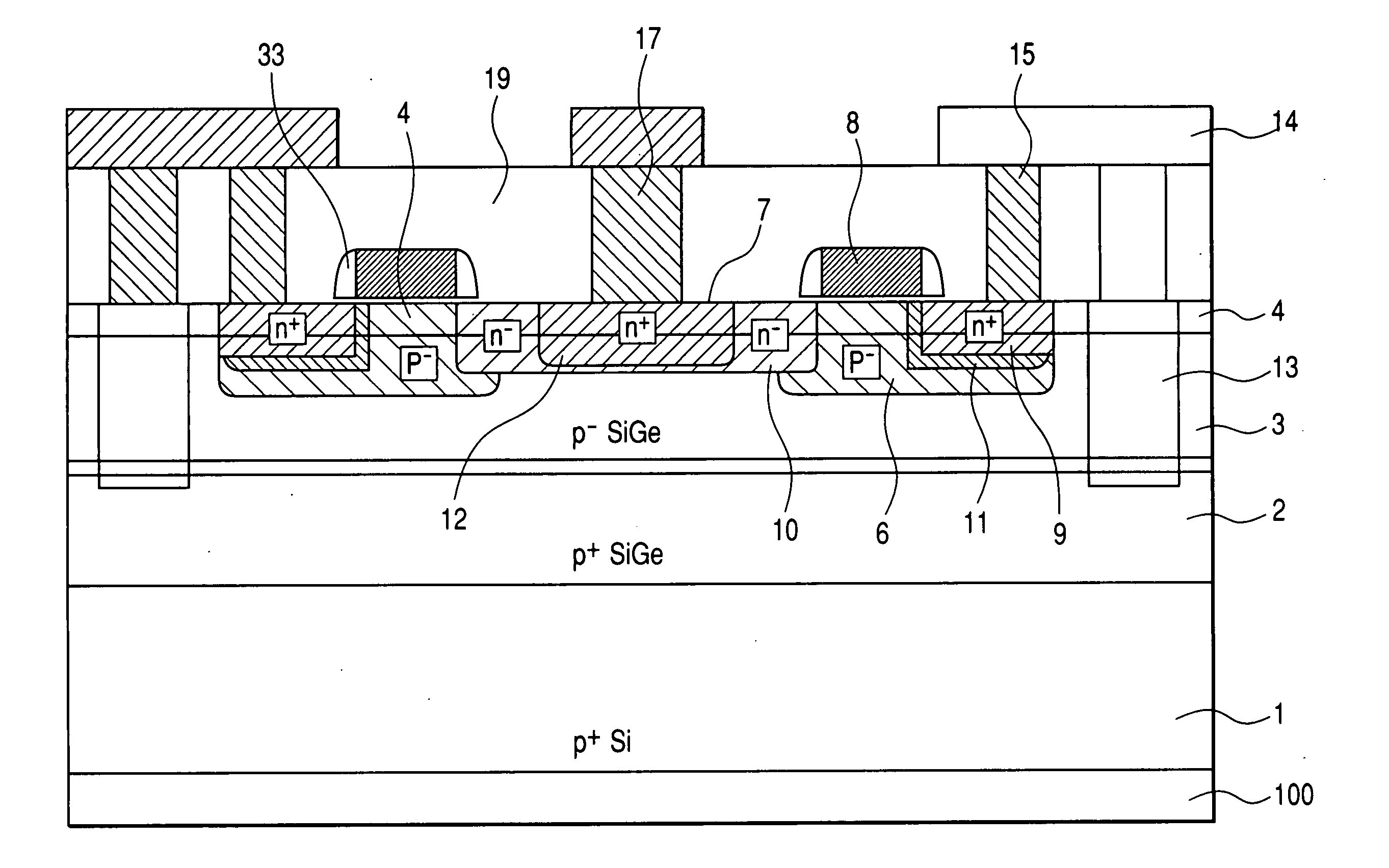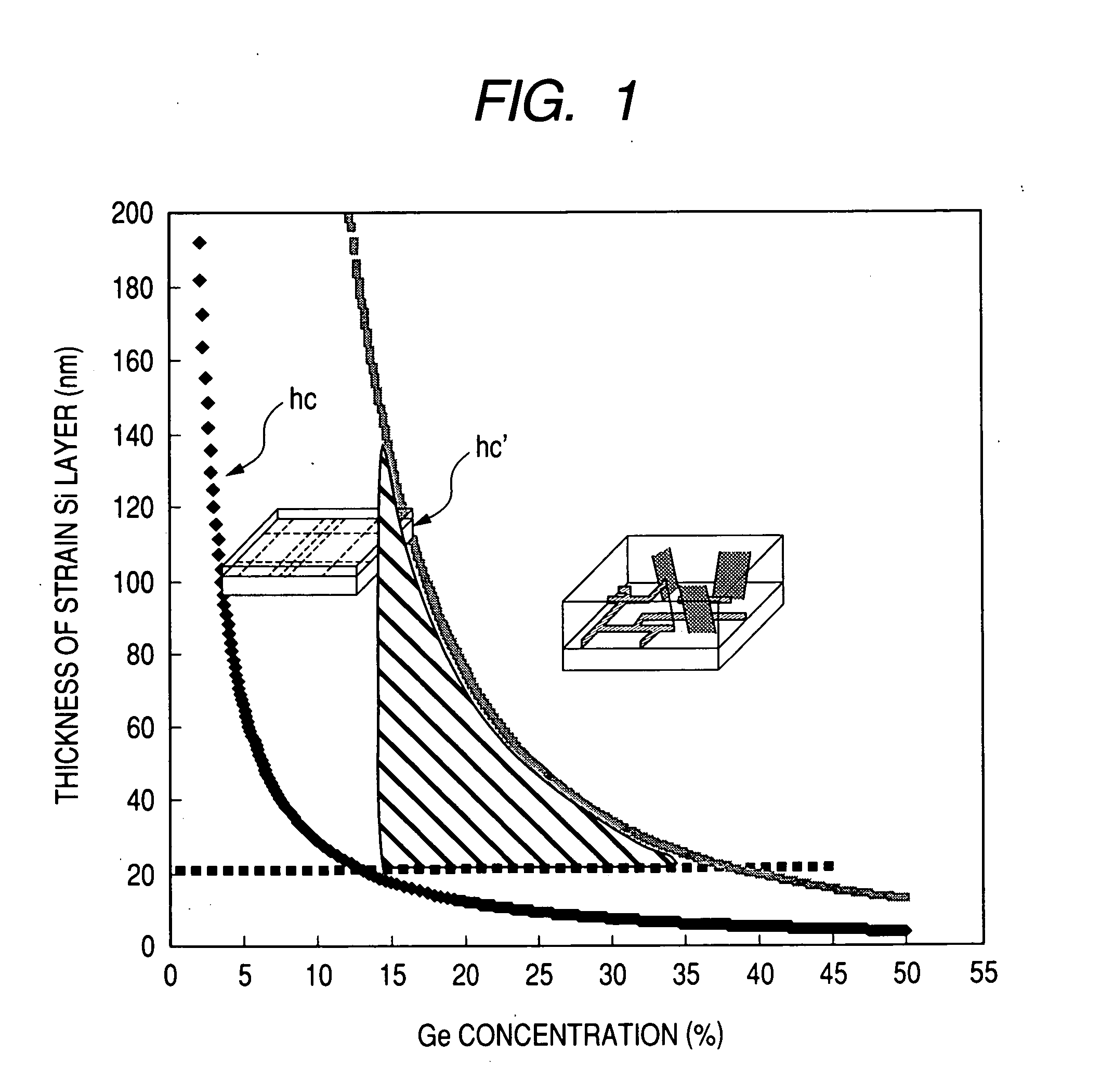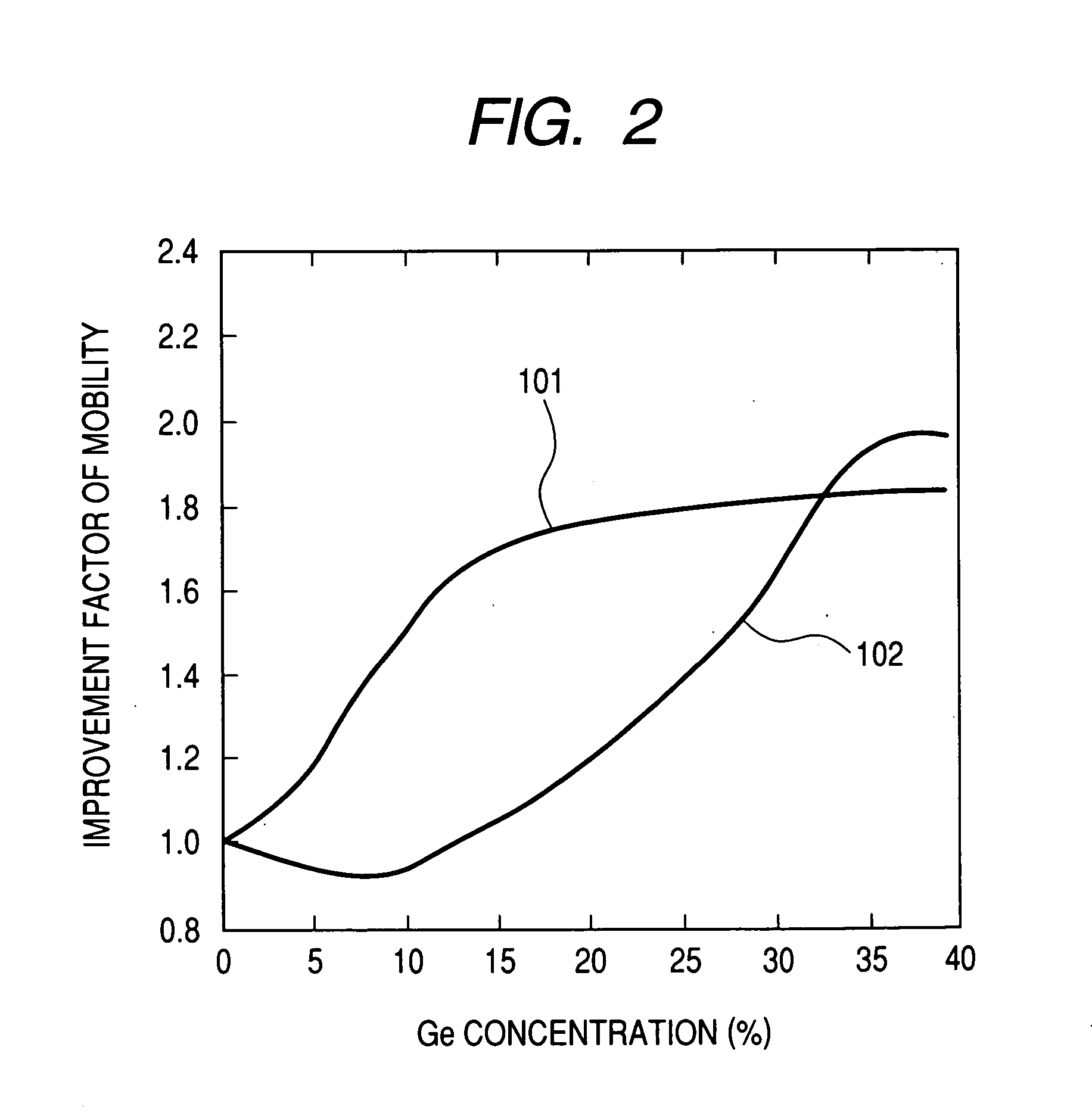Semiconductor device and method of manufacturing the same
a semiconductor and semiconductor technology, applied in the field of field effect semiconductor devices, can solve the problems of high cost of wafer units, limit on increased efficiency, and appear to reach the limit of miniaturization, and achieve the effect of increasing the film thickness of the portion and high frequency power amplification
- Summary
- Abstract
- Description
- Claims
- Application Information
AI Technical Summary
Benefits of technology
Problems solved by technology
Method used
Image
Examples
example 1
[0154] This example illustrates a field effect semiconductor device for high frequency power amplification in a case of setting a relation for the strained Si film thickness for channel and offset portions to the first case in the means of the present invention described previously. That is, this is a case in which the relation for each of film thickness is: 0.5 hch≦hoff
[0155]FIG. 6 is a cross sectional structural view showing a relation of the strained Si film thickness in Example 1.
[0156] At first, a cross sectional structure of a field effect semiconductor device of Example 1 is to be described specifically with reference to FIG. 3 and FIG. 19.
[0157] Referring to FIG. 3, a basic stacked structure of this example is to be described. In the stacked semiconductor structure of this example, a P-type low resistance first SiGe layer 2, a P-type high resistance second SiGe layer 3, and a P-type high resistance strained Si layer 4 are stacked in this order above a P-ty...
example 2
[0175] This example illustrates a field effect semiconductor device for high frequency power amplification in a case of setting a relation of the strained Si film thickness for channel and offset portions to the first case and as: hch
[0176] The basic structure and manufacturing steps are similar to those shown in Example 1. This is different from Example 1 in that growing of thickness and fabrication are controlled such that the relation of strained Si film thickness for the channel and offset portions is: hch
[0177] The relation of film thickness as shown in FIG. 8 is attained by fabricating the gate electrode 8 and then epitaxially growing a second conduction type Si film at an impurity concentra...
example 3
[0178] This example illustrates a field effect semiconductor device for high frequency power amplification in a case of setting a relation of strained Si film thickness for channel and offset portions to the second case. That is, in the second case, relations of the film thickness are defined as: hch≦hc
[0179] The basic structure and manufacturing steps are similar to those shown in Example 1. This is different from Example 1 in that growing of thickness and fabrication are controlled such that the relation of strained Si film thickness for the channel and offset portions is: hch≦hc
[0180]FIG. 9 is an explanatory view showing the state. In this example, the strained Si film thickness for the offset portion is larger than the strained Si film thickness below the channel and while the former is less than the critical film thickness, the latter is more than the critical film thickness. Accordingly, appropriate countermeasures have to be applied in order not to increase the ...
PUM
 Login to View More
Login to View More Abstract
Description
Claims
Application Information
 Login to View More
Login to View More - R&D
- Intellectual Property
- Life Sciences
- Materials
- Tech Scout
- Unparalleled Data Quality
- Higher Quality Content
- 60% Fewer Hallucinations
Browse by: Latest US Patents, China's latest patents, Technical Efficacy Thesaurus, Application Domain, Technology Topic, Popular Technical Reports.
© 2025 PatSnap. All rights reserved.Legal|Privacy policy|Modern Slavery Act Transparency Statement|Sitemap|About US| Contact US: help@patsnap.com



